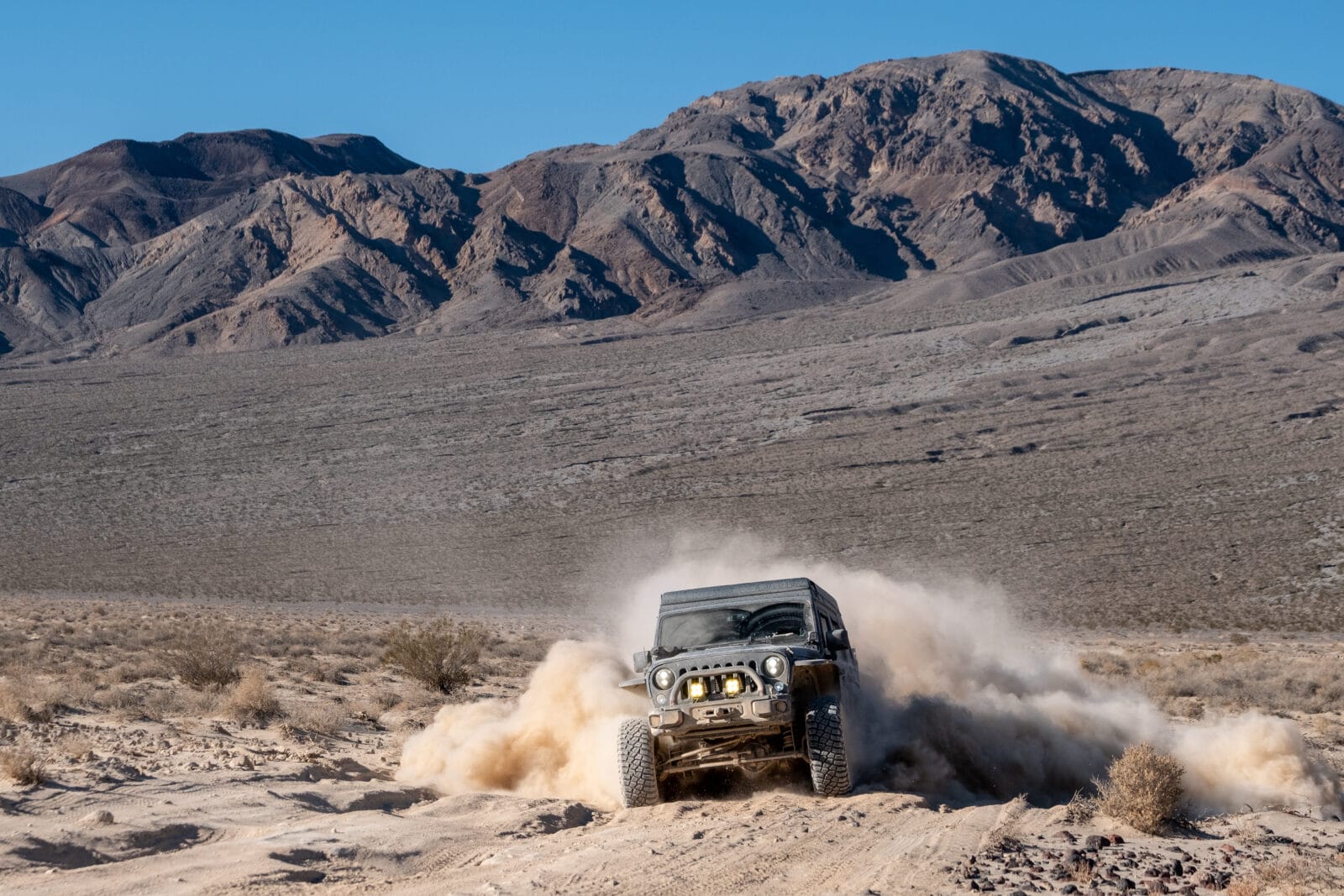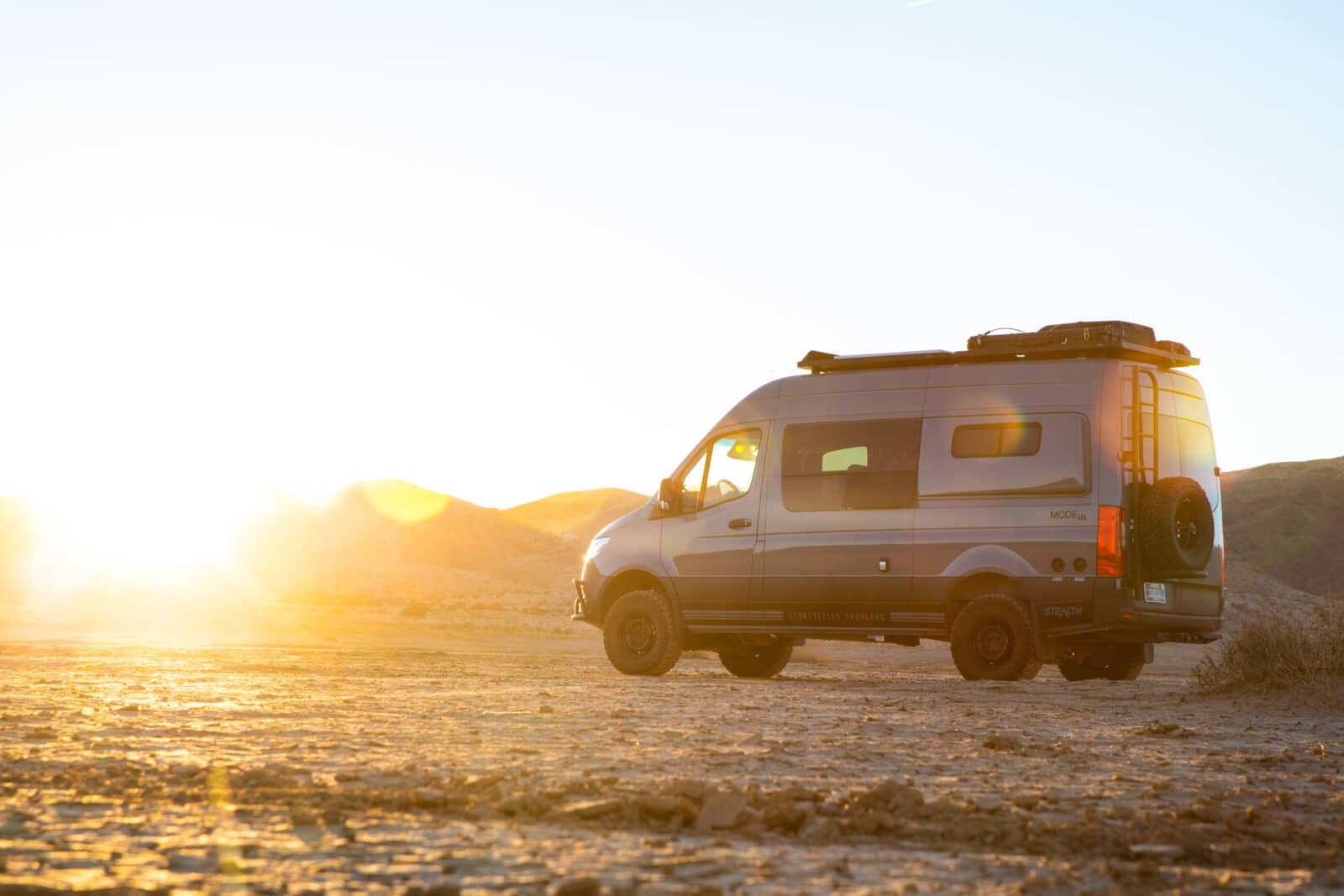Trail Guide Trip Report: Death Valley, California
Chris Cordes manages the Trail Guide program at onX Offroad. Trail Guides run trails across the nation (and even into Canada and Mexico) to map routes, write trail descriptions, set difficulty ratings, and add photos. To kick off our new series of “Trail Guide Trip Reports” we called on Chris to give us some highlights from one of his favorite trips: overlanding across Death Valley, California.
Note: To view Chris’s highlighted trails, make sure you have upgraded to Premium or Elite and are in Dirt Mode in the App.
By definition, the desert may not seem like the most attractive place. A “dry, barren area of land, especially one covered with sand, that is characteristically desolate, waterless, and without vegetation” doesn’t fit your standard idea of vacation, but Death Valley just might surprise you. Tucked between its soaring peaks and sand-swept valleys are a trove of natural wonders, intriguing oddities, and breath-taking vistas reached only by dirt roads and trails. Visitors can sand board down immense cascading dunes, soak in the hot springs of a remote oasis, enjoy brunch by a pool, and even see fish found nowhere else on the planet. For the adventurous, it’s a paradise just waiting to be explored.
Death Valley Highlights

Southern End
The southern end of the park epitomizes Death Valley. The Harry Wade Route will lead you to the salt flats of Bad Water Basin, the lowest point in North America at 282 feet below sea level. The road ranges from well-graded in the cooler months, to nearly impassable with deep sand when conditions are hot so be prepared for anything.
Just beyond the martian landscape of the valley floor you can find the Artist’s Palette where volcanic deposits have painted the mountains red, orange, yellow, blue, pink, and green, and Saratoga Springs where lush pools and even fish stand in stark contrast to their surroundings. Take the pavement where necessary to reach these sites, but then hop on the West Side Road to cruise across the same basin Mos Eisley was filmed in for Star Wars.
Central
Leaving Bad Water Basin you will arrive at the aptly named Furnace Creek which holds the world record temperature of 134 degrees. Ironically, this hot spot is also the park’s bustling business district with an assortment of camping, fuel, and restaurant options. You can even grab brunch at the historic Inn at Death Valley, or maybe book a room and hang by the pool for a truly out of this world experience.
Refreshed and ready for the challenges ahead, the Panamint range awaits. Cross it on the 190 and be sure to stop at Father Crowley Vista Point. It’s one of the best vehicle-accessible views in the park, and a world-famous spot to watch military jets fly by at just a stone’s throw away.
Afterwards, the Racetrack Via Hunter Mountain road will lead you to one of the park’s most famous sites, a dry lake bed where stones drift across the barren surface of their own accord. This trail eventually leads you to Lippincott Pass, a technical, narrow, and at times heart-pounding drive across the mountains into the Saline Valley. It can take some additional time, but the views are well-worth it.
Northern End

The northern end of Death Valley is one of the more remote and least visited portions of the park. It can only be accessed by dirt roads, which makes it a perfect place to escape the crowds and seek some solitude. From Lippincott, follow Saline Valley road North until it crosses with Steele Pass. This 36 mile trail is a highlight of the trip, offering some of the more challenging and tight terrain in the park, as well as the best views of Eureka dunes. Even if your vehicle isn’t up for the whole trail, drive the first portion to the Saline Valley Warm Springs, a remote desert oasis that’s well worth the stop. Afterwards, you can choose to continue through Steele Pass to Eureka Dunes, or take the long way around via Saline Valley road. Just make sure you don’t miss the chance to see these mammoth hills in person.
Death Valley Vehicle Restrictions
The National Park website states:
Driving off roads is prohibited. The desert environment is extremely fragile and slow to recover from vehicle damage. Honor road closures. If in doubt, do not drive. Operating a motor vehicle in a manner that causes unreasonable damage to the surface of a park road or route is prohibited.
All motorized vehicles and drivers must be properly licensed. Off-road vehicles are prohibited from operating on all park roads, paved or dirt. These types of vehicles include, but are not limited to, ATVs, dirt or motocross bikes, and golf carts, Rhino or Polaris multiple passenger vehicles. Duel sport motorcycles are allowed on paved or dirt roads as long as the vehicle is registered and street legal according to California state laws.″ Vehicles with off-road registration “green stickers” may not be operated in the park.